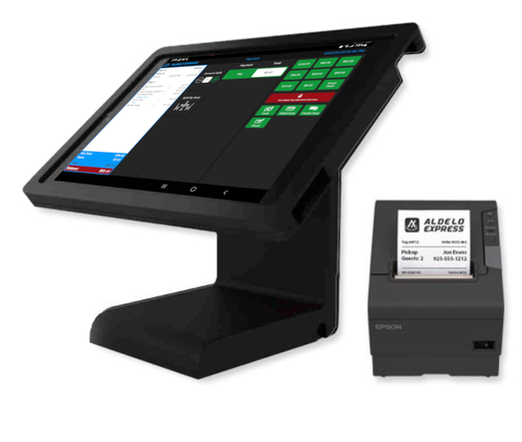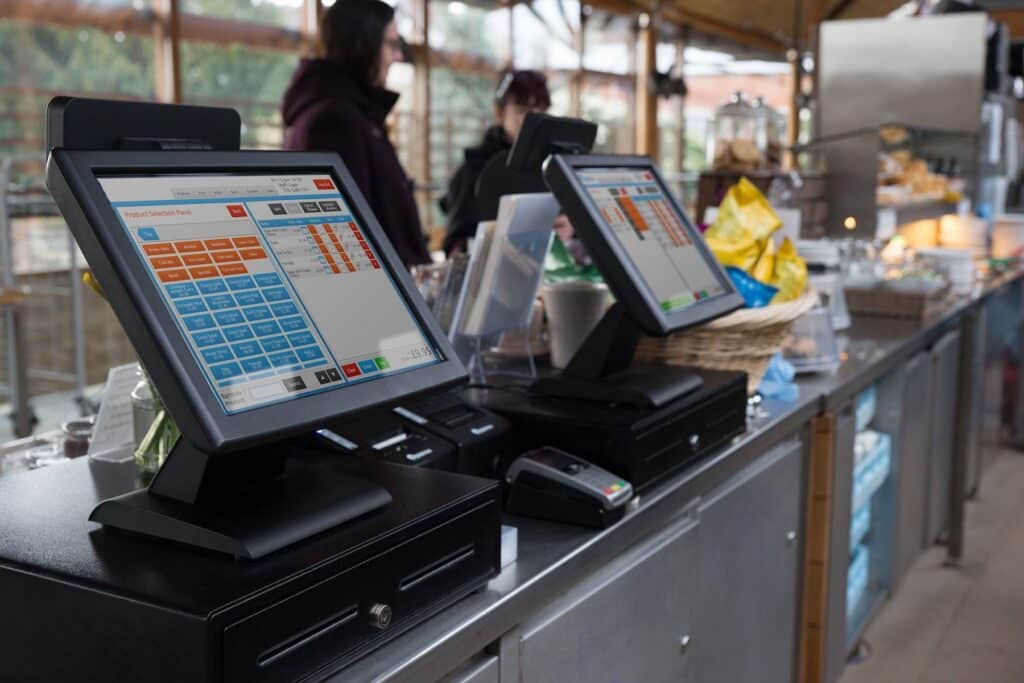How POS System Works: A Comprehensive Overview for Business Owners
A POS system serves as an important device for modern-day companies, incorporating numerous components to improve procedures. It incorporates hardware like barcode scanners and software up for sale monitoring. This system not only processes deals but likewise handles supply and evaluates customer habits. Recognizing its functionality can substantially affect a company's effectiveness and decision-making. What are the crucial elements that add to this effectiveness? Checking out these elements supplies beneficial insights.
Recognizing the Components of a POS System
A Point of Sale (POS) system is composed of numerous key parts that collaborate to help with purchases and handle company procedures. At its core, the hardware consists of devices such as a money register, barcode scanner, invoice printer, and repayment incurable, all important for processing sales (Restaurant POS Software). The software component manages inventory, sales monitoring, and consumer information, offering important insights for service decisions.Additionally, databases store purchase records and consumer info, ensuring information integrity and security. Network connection enables real-time updates and accessibility to cloud-based solutions, improving operational performance. Customer interfaces, designed for convenience of usage, allow team to browse the system rapidly, reducing training time. Together, these components create a natural system that streamlines the sales process, improves customer support, and help in efficient administration of business resources. Comprehending these elements is important for entrepreneur looking for to optimize their POS systems
How Sales Purchases Are Processed
When a consumer makes a decision to make a purchase, the sales deal starts a series of organized steps within the POS system. The cashier inputs the items being purchased, which are scanned with a barcode visitor or by hand gotten in. This action fetches item details, including pricing and suitable taxes, from the system's database.Next, the consumer is provided with the complete amount due. The POS system then refines the settlement, whether through money, bank card, or mobile repayment approaches. For electronic repayments, the POS securely interacts with settlement cpus to authorize and verify the transaction.Once the settlement is validated, the system generates a receipt, which can be printed or sent out electronically. This invoice acts as receipt for the consumer. Ultimately, the deal data is taped in the system, guaranteeing precise sales records and financial monitoring for the company.
Stock Management and Monitoring
Efficient inventory management and monitoring are important components of a POS system, as they ensure that organizations preserve perfect stock levels and reduce discrepancies. A robust POS system permits real-time inventory updates, reflecting sales and returns instantaneously. This makes it possible for local business owner to check supply degrees accurately, making certain that prominent items are conveniently available while protecting against overstocking of less popular products.Additionally, progressed POS systems offer functions such as automated supply informs and reorder suggestions, simplifying the purchase process. Barcoding and RFID technology boost precision in tracking inventory activity, lowering human error. Comprehensive coverage devices offer understandings right into inventory turn over prices, assisting organizations make informed choices concerning purchasing and item offerings. Inevitably, effective stock monitoring through a POS system not just improves functional effectiveness but likewise enhances consumer fulfillment by guaranteeing item schedule.

Analyzing Consumer Information and Insights
Client information analysis acts as an effective device for organizations using a POS system. By gathering and taking a look at deal information, companies can uncover beneficial understandings regarding client habits and choices. This evaluation enables look at here them to identify purchasing trends, peak shopping times, and preferred products, consequently informing stock choices and advertising strategies.Additionally, companies can section their consumer base, enabling individualized advertising initiatives that provide to details demographics or purchasing behaviors. Understanding customer loyalty patterns additionally assists in developing targeted promotions and rewards programs.The information gleaned from a POS system can additionally reveal understandings into client feedback, making it possible for companies to make enlightened decisions concerning product offerings and solution enhancements. Eventually, leveraging customer information successfully can enhance the total purchasing experience, foster client complete satisfaction, and drive revenue development.
Advantages of Carrying Out a POS System
Implementing a POS system supplies countless advantages that can greatly improve organization procedures. To start with, it streamlines purchase procedures, decreasing wait times and boosting client fulfillment. By automating sales processes, companies can decrease human error and assurance precise record-keeping. In check addition, a POS system offers important information analytics, enabling owners to track sales patterns and stock levels in real-time. This understanding supports informed decision-making, helping to maximize stock monitoring and marketing strategies.Moreover, several POS systems incorporate with other organization tools, such as accountancy software application, simplifying financial administration. Enhanced staff member administration functions, such as tracking hours and performance, more contribute to operational efficiency.Lastly, the execution of a POS system can lead to boosted income with improved consumer experiences and calculated insights, eventually cultivating business growth and sustainability.
Frequently Asked Questions
What Kinds Of Organizations Can Profit From a POS System?

Just how Much Does a POS System Commonly Price?
The cost of a POS system generally ranges from a couple of hundred to a number of thousand dollars, depending on functions, hardware, and software application - Restaurant POS Software. Services should think about continuous fees for maintenance, assistance, and purchase handling when budgeting

Can I Incorporate a POS System With Existing Software?
Incorporating a POS system with existing software program is typically possible. Numerous systems use APIs or built-in compatibility functions, enabling companies to streamline operations and enhance performance by connecting various software applications efficiently.
What Training Is Needed for Staff to Make Use Of a POS System?
Training for staff to utilize a POS system generally consists of understanding software performances, refining purchases, handling stock, Your Domain Name and handling consumer communications - Restaurant POS Software. Practical demonstrations and hands-on session enhance proficiency and self-confidence in using the system successfully
What Takes place if the Internet Goes Down While Using a POS System?
If the web decreases during POS system usage, deals might be disrupted. Several systems supply offline capacities, permitting standard procedures to proceed, yet full performance, consisting of real-time stock updates, will be restricted.